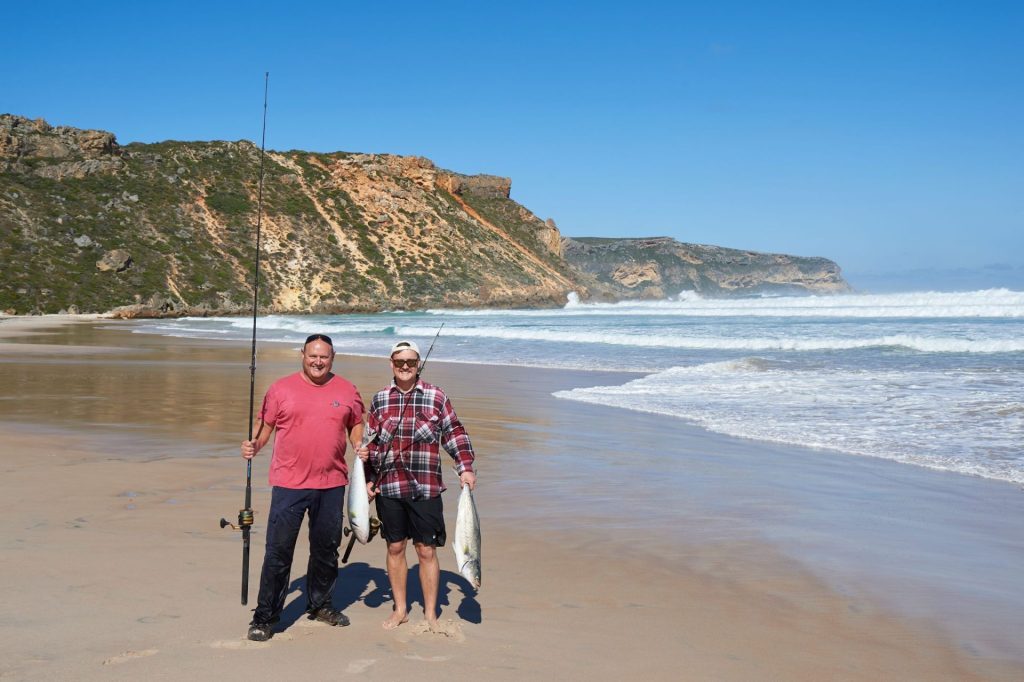What more could you want then to drive along a beach, set up the camp chairs, stick a rod in a holder and wait for the school to arrive with great company? Keep the sand between your toes as you round up the family, head to one of our beaches and give it a shot at catching a fantastic Salmon.
Salmon lives on the south coast near Esperance and Albany for most of the year then combine into large schools the size of football fields in autumn and migrate towards the South West where they are thought to spawn around Cape Naturaliste.

When can you catch salmon?
March to April is the best time to go Australian Salmon fishing in our region. This time of the year is when the salmon reach the southwest coast and turn towards the north.
How often do salmon runs happen?
A salmon run is an annual fish migration event where many salmonid species, which are typically hatched in fresh water and live most of the adult life downstream in the ocean, swim back against the stream to the upper reaches of rivers to spawn on the gravel beds of small creeks.
Where can you catch a salmon?
Salmon move in large schools and often track close to shore, hiding in the gutters along the beach awaiting smaller prey, making them accessible from our beaches for fishers of varying abilities and ages.
Fishing from the beach gives you great access to the big salmon schools that will make their way along the coast. Along our coastline the following are all good salmon fishing locations:
• Warren beach
• Yeagarup beach
• Fish Creek
• Windy Harbour
• Salmon Beach
• Black Point
• Malimup Beach
• Gardner
• Coodamurrup Beach
• Banksia Camp
• Mandalay Beach
If salmon isn’t your thing, majority of these beaches also produce skippy, whiting, herring, samson fish, bonito and more. Alternatively the rivers on the south coast can offer superb bream fishing, where you’ll find herring, skippy, whiting and squid waiting for a lure to pass by in the estuaries.

Safety first:
Not knowing your surroundings can make it unsafe but also unenjoyable, so please check the weather, read the safety/warning signs, keep an eye out for potential hazards, wear appropriate clothing/footwear and always tell someone your plans.

